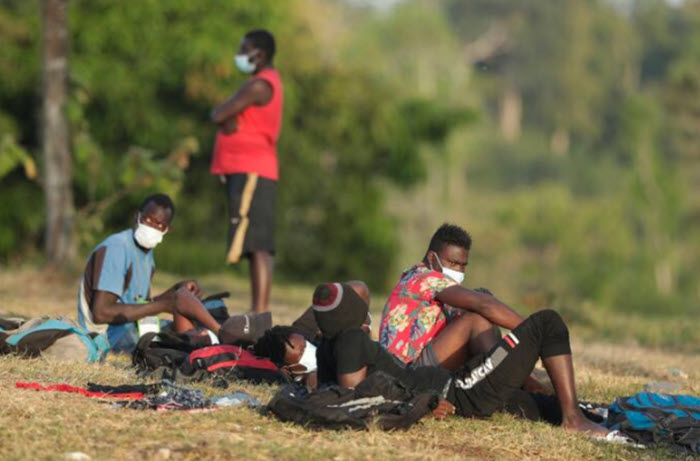The number of migrants trekking through one of the world’s most dangerous jungles to reach the U.S. has surged nearly twentyfold since the start of the year, overwhelming towns along the route and threatening to aggravate the crisis at the U.S. southern border.
More than 19,000 migrants walked to Panama from Colombia last month, compared with 1,007 in January, according to Panama’s Foreign Affairs Ministry. They came from more than 30 different countries, from Bangladesh to Sierra Leone, but Haitians and Cubans were the most numerous.
The flow of exhausted, half-starved people emerging out of the rainforest in southern Panama typically slows at this time of year as heavy rain makes the route even more hazardous. Instead, numbers spiked, Erika Mouynes, Panama’s foreign affairs minister, said.
“It is, in normal conditions, one of the rainiest places in the world. And when you add the rainy season, it is extremely muddy, and very difficult,” Mouynes said Monday, in an interview. “We were thinking that those numbers were going to go down. That’s not been the case.”
Mouynes set up emergency talks on July 11 with representatives from the U.S., Ecuador, Brazil, Chile, Colombia, Costa Rica and Mexico, to try to stem the flow. She said it’s the first time that these countries have held ministerial-level discussions to address the issue.
Much of the current spike consists of Haitians who left their country years ago and had been working in Chile until a change in the law that took effect in April made it harder for them to stay there. Other Haitians had been living in Brazil, and more than 1,600 of those who crossed last month were minors born to Haitian parents in either Chile or Brazil, according to Panama’s migration agency.
Even before that, migration had been on an upward trend as travel restrictions eased across the world, and the pandemic caused increased poverty in developing nations.
Panama wants some of its southern neighbors to shut off a loophole that allows people from all over the world to get to the U.S. via South American nations that don’t require visas.
Migrants from as far away as Uzbekistan, Angola and Egypt fly to the region, then make their way to northern Colombia. There the roads end, and they must continue the journey for six or seven days on foot through the no-man’s land known as the Darien Gap, one of the deadliest places on earth, where they might die of hunger, drown in a river, be attacked by wild animals or be robbed or raped by other migrants.
Nations such Panama, Colombia and Costa Rica, which are merely transit countries, are trying to form a “united front” to request that their neighbors help better control the flow, Mouynes said. Colombian authorities said last week that there are more than 10,000 migrants in the small town of Necocli, one of the final stops before the Darien Gap.
Colombia was already struggling to deal with another migration crisis from the arrival of 2 million Venezuelans in recent years.
Panama currently has about 3,000 migrants temporarily living in camps, who’ll be provided with free transport to Costa Rica, the next country en route to the U.S. But it’s hard for Panama to plan when the number of migrants can fluctuate from 16 one day to 1,500 the next, and when they can show up at small towns at any hour of the day of night, Mouynes said.
Less than 1% of the migrants arriving in Panama on foot are seeking asylum, she said. Nearly all of them want to continue north to eventually reach the U.S.
Migration has become one of the biggest political challenges for the administration of U.S. President Joe Biden, and the increase via Panama comes on top of the surge from Guatemala, El Salvador and Honduras this year. The U.S. Customs and Border Protection encountered 210,000 undocumented migrants last month, the largest number in more than two decades, according to the Washington Office on Latin America, which studies human rights in the region.
Thanks again Joe!!!
